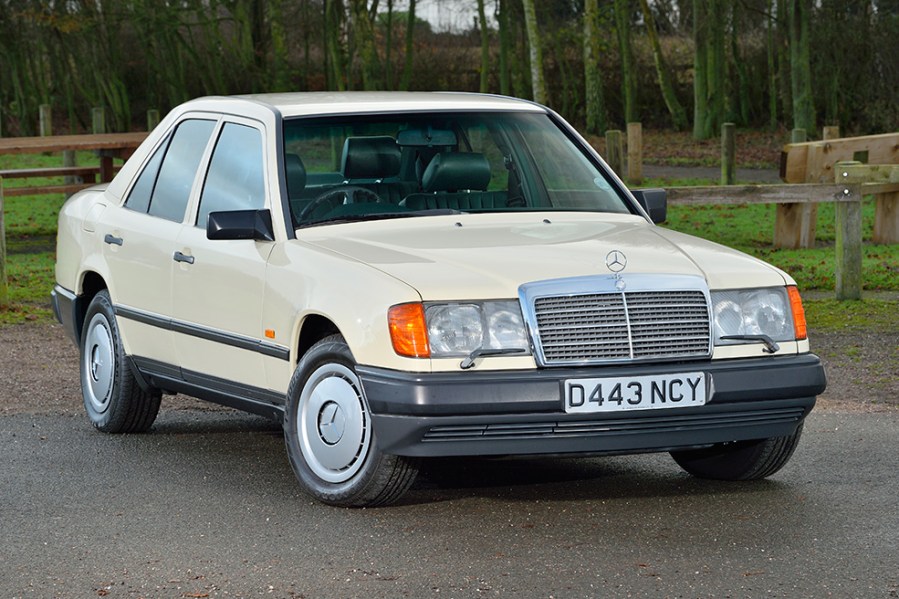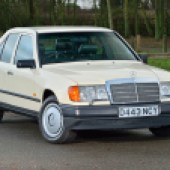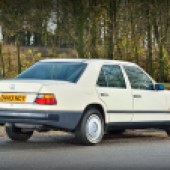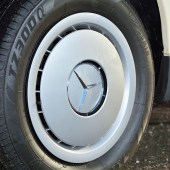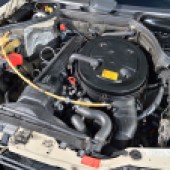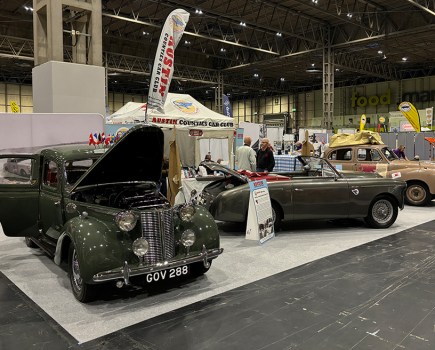Classics World’s Chris Stacey test drives and reviews the 1987 Mercedes Benz 300E…
Decade after decade, Mercedes Benz set the benchmark for executive saloon cars with their successive E-Class offerings. High quality, reliability beyond reproach and capable of racking up interstellar mileages with little more than refuelling and routine servicing, they became the default choice for company executives and taxi drivers around the world.
By the mid-Eighties the Stuttgart firm’s W123 E-Class was due for replacement; BMW and Audi were making progress in their ambitions to build reputations for German engineering quality in the executive market, threatening to steal share from Mercedes. When the W124 E-Class launched in 1984, Mercedes had a lot riding on their new high-end design.
The W124 didn’t disappoint and has proved as robust as any car ever to roll off a mass-production line. All the usual Mercedes epithets apply, including ‘hewn from solid rock’ and ‘built like a tank’. However the W124 was arguably the grand finale for such excellence, as cost cutting in the late Nineties led to a well-documented fall in reliability and perceived quality in subsequent models. While much of the W124 design was brand new, the engineers at Mercedes stayed true to the company’s core values of quality and durability when creating this version of the company’s E-Class.
The basic W124 platform provided for a traditional three box saloon, a large estate car, a sleek coupé and a drop top. Four- and six-cylinder engines were offered, fuelled with petrol or diesel, in capacities ranging from an underwhelming 2 litres to a more-than-adequate 3.2 litres. Top of the range was the 400 E, powered by a 4.2 litre V8, though Mercedes never officially sold this version in the UK. Transmission was via four- or five-speed manual gearboxes or automatic, which proved a popular option.
Styling remained traditional but the somewhat staid appearance hid a big reduction in drag, allowing gains in performance and fuel economy. Under the skin, front suspension relied on a MacPherson strut arrangement with the coil springs mounted separately from the shock absorber strut. For the rear, an all-new coil sprung multilink arrangement was designed, a basic layout that has since been taken up by rival manufacturers. Braking is provided by generously proportioned discs all round.
The W124 tested today is a 1987 vintage E300, the 3 litre straight six petrol engine matched with the optional four speed auto gearbox, and it’s currently for sale with family-owned dealership Albert Abbott Motors of Northampton. The car is completely original and appears in virtually time-warp condition, though in fact it’s covered almost 150,000 fully documented miles, belonging to a doctor first owner for 26 years. The huge history file starts with the Mercedes factory build sheet and original bill of sale, and includes MoT certificates and service receipts throughout the car’s life.
The Mercedes W124 range offered buyers several distinct choices of power plant, petrol or diesel, with four or six cylinders. Top dog in the UK was a 3.2 litre six, available in petrol or diesel versions. The four cylinder engines are workmanlike but really can’t deliver performance commensurate with the style of the car. Diesels, though more frugal, don’t offer the refinement of the petrol engines. We think this 3 litre six-pot petrol engine with auto ‘box is the ideal specification.
Externally the car is very clean without significant paint chips or scratches. Wheel arches, sills and floors are solid, with no corrosion visible. The vendor advises that repairs have been carried out to the sills; clearly the work has been done to a high standard.
The Mercedes cabin is very much a no-nonsense affair, with quality of materials being obvious. It’s the German ethos of quality without compromise that instantly impresses; the 30 year old driver’s seat still looks new, with leather showing no signs of long term use. The only traces of wear are slightly wavy piping on the outer edge of the driver’s seat base and a few cracks on the cover of the centre armrest.

ON THE ROAD
Closing the door produces the expected solid ‘thunk’; the controls feel firm, precise and ready to provide another three decades of untroubled service. On the move, the engine and auto ‘box function perfectly smoothly, with a muted six cylinder hum in the background. The car rides well; there’s a German firmness about the suspension but it’s never harsh. All remains calm in the cabin with no rattles or trace of thumping from the road. The impression is of total solidity, a rigid structure capable of comfortably and safely circumnavigating the globe at a moment’s notice.
This car needs nothing more than a tank of fuel to be ready to serve as daily driver or even to tour the Continent. If the next owner wanted to show it, a bit of time spent on detailing and it would be ready.
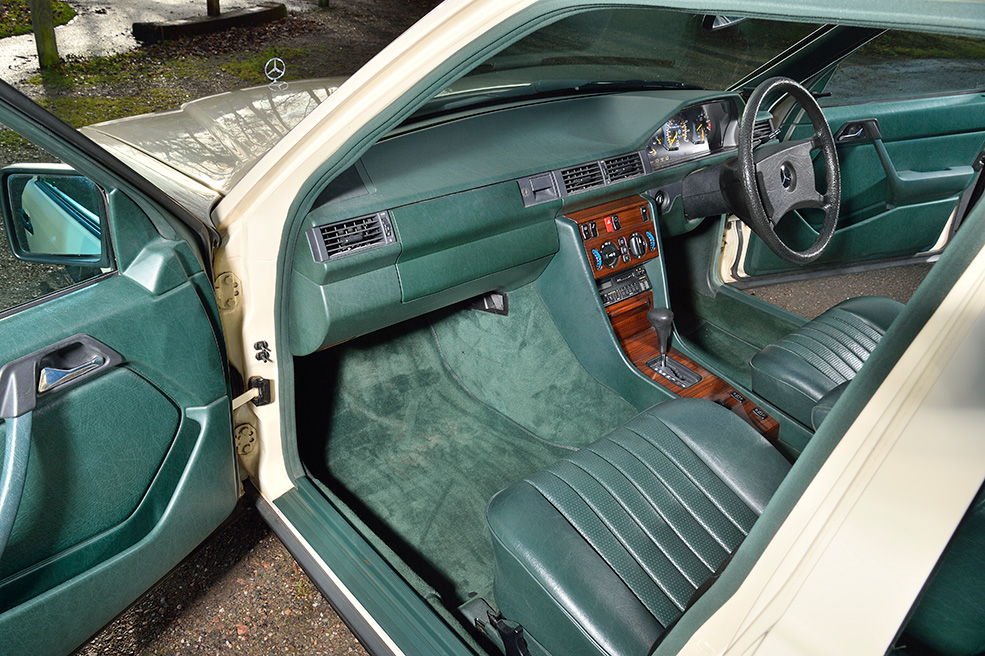
VERDICT
This is an excellent example in a desirable specification and comes with impeccable history. Don’t be put off by the mileage as W124 Mercs run well almost indefinitely, needing little more than basic servicing. This one feels very fresh despite almost 150,000 miles on the clock. The price is fair and the car needs nothing to make a smart daily driver, or given a little detailing, it would do well in any car show. If you’re looking for a top W124 saloon, this one definitely deserves checking out.
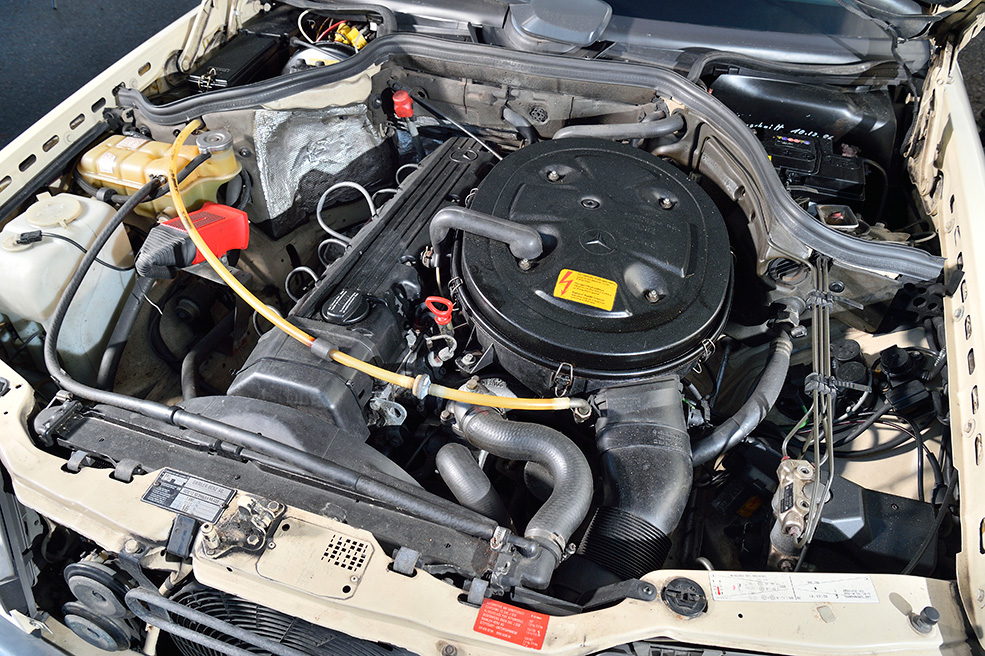
TECH SPEC Mercedes E-300 W124
Engine: 2,962cc, Straight 6
Transmission: 4-speed auto
Maximum Power: 178bhp @ 5,700rpm
0-60mph Acceleration: 9.1 secs
Maximum Speed: 135mph
Fuel Consumption: 25mpg
Length: 4,740mm
Weight; 1,735Kg

